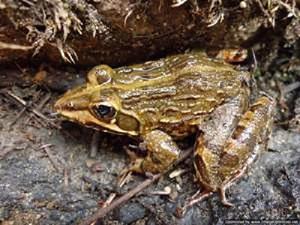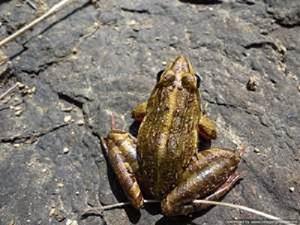Edwin Tambara
The project aims to locate, determine population sizes and distribution of five endangered frog species and to give an ecological assessment into drivers in decline and distribution.

Overally, our project aims to address three core aspects that will ensure conservation of five endangered endemic frog species (Amietia inyangae, Arthroleptis troglodytes, Strongylopus rhodesianus, Probreviceps rhodesianus and Vandijkophrynus inyangae). 1. Research, aims to determine population sizes and distribution, habitat associations, quantify effects of anthropogenic perturbations. 2. Capacity building, through outreach programmes for schools and the general public. 3. Policy, seminars and workshops aimed at educating policy makers on impacts of, land use, deforestation, climate change and other factors on amphibian and biodiversity in general.

Approximately one-third of the world’s amphibians are threatened with extinction. In the present massive decline, amphibians are not faring as well as other taxa. The leading factors contributing to amphibian decline worldwide include habitat modification and fragmentation, climate change, pathogens, invasive species, pollution, overharvesting and the conversion of forest lands to other secondary landscapes. These events have not spared amphibian species in Zimbabwe. Of the fifty-six known species in Zimbabwe, only thirty-nine have been recorded in the last two years.
The Eastern Highlands are the hub of endemism in Zimbabwe, known for their high number of endemic species of plants and animals. This fact has not spared the area from the on-going biodiversity loss. All the seven endemic frog species in Zimbabwe, are currently listed in the IUCN Red List (September 2011) of endangered species and five of which are montane species (Amietia inyangae, Arthroleptis troglodytes, Strongylopus rhodesianus, Probreviceps rhodesianus and Vandijkophrynus inyangae) confined to the Eastern Highlands. Because there has been no long-term monitoring on these species we are unclear of their conservation status; all could be extinct in the wild. Ecological information on the endangered species is one key outcome expected from the first phase of this project.
This information will indicate the current status of each species in terms of population size, distribution, main threats, habitat associations, breeding and feeding behaviour. Such ecological information has immediate conservation value and will be crucial in establishing immediate conservation action plans.